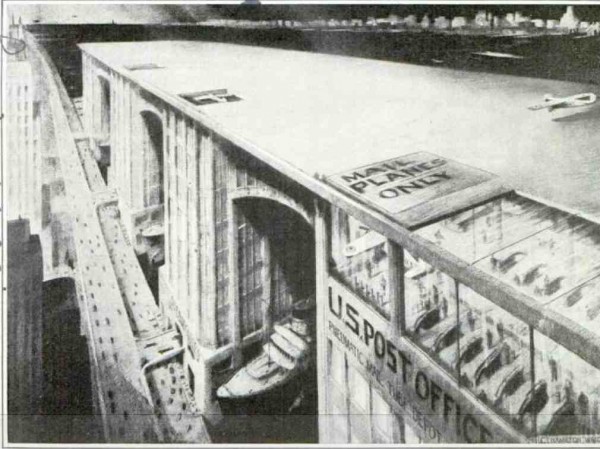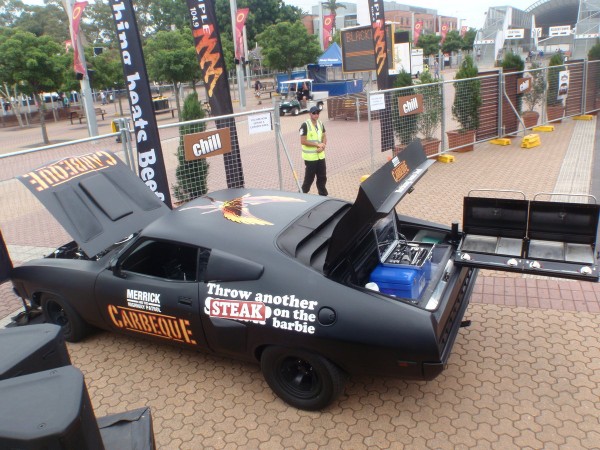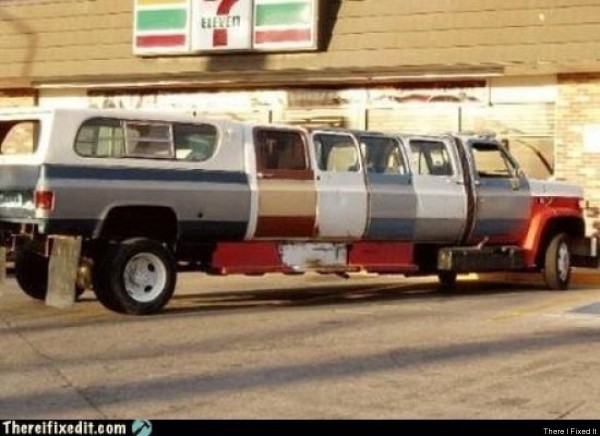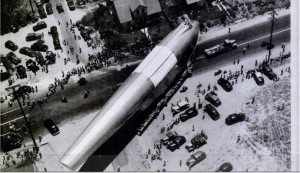Transportation
Manhattan Super Terminal

If only this gargantuan structure had actually been built! What a different world we would have inhabited....
Original article here.
Posted By: Paul - Tue Jun 04, 2013 -
Comments (6)
Category: Engineering and Construction, Urban Life, Utopias and Dystopias, Transportation, 1930s
Make A Cardboard Bicycle for $9
This isn't at the mass production stage yet, but someday soon you may be able to ride your own cardboard bicycle.Here's a link to the story:
http://gajitz.com/working-bike-made-of-recycled-cardboard-cost-just-9/
I like the cardboard seat demonstration, but I think I'd rather buy one for $60 than spend the time to make my own.
Posted By: gdanea - Wed Apr 17, 2013 -
Comments (2)
Category: Transportation
The Anti-Collision Train
Imagine you're riding in a train, when you see another train hurtling toward you on the same track. No problem. You're on the "anti-collision train," designed by P.K. Stern of New York. It was a bold idea for improving travel safety, but it never caught on. The Strand magazine (1904) explained the concept:The cars, although they run upon wheels, are really travelling bridges, with overhanging compartments for the accommodation of passengers. Over the framed structure of the cars thus constituted an arched track is carried, securely fastened to the car and serving the purpose of providing a road-bed for the colliding car. This superimposed track is built in accordance with well-understood principles of bridge construction.

Posted By: Alex - Fri Feb 01, 2013 -
Comments (9)
Category: Inventions, Travel, Transportation, Trains
Carbeque
Greatest modification ever -- a barbecue installed in a car!!Now the tailgate party goes wherever the car can go.

Here's the link:
http://www.justauto.com.au/justcars/know/news/6737659e-b6aa-4ea9-ac6c-2f19a3b3221c
At $156,000, the host of an Australian radio show spent the entire marketing budget on the car.
At the link, you can read the reason driving and barbecuing at the same time aren't recommended.
Posted By: gdanea - Mon Dec 03, 2012 -
Comments (3)
Category: Transportation
Human Hamster Wheel
Too drunk to use the escalator?I don't know how long he thought this set of stairs was, but he was willing to keep trying.
Posted By: gdanea - Wed Nov 14, 2012 -
Comments (12)
Category: Transportation
DIY Railroading
Posted By: Paul - Thu Nov 08, 2012 -
Comments (7)
Category: Hobbies and DIY, Inebriation and Intoxicants, Inventions, Technology, Wild West and US Frontier, Transportation
10 Door Truck
Ten people can jump in this truck at the same time.
If you have more than ten friends, I guess two doors could always be added.
It doesn't look like every door works, but you could still jump in the back.
The real question is what did they buy at the 7-11?
Posted By: gdanea - Mon Sep 10, 2012 -
Comments (9)
Category: Transportation
Save the Manuals?
Experts are predicting that within 15 to 20 years manual-transmission cars might be "virtually extinct." This has inspired Eddie Alterman of Car and Driver magazine to launch a 'Save the Manuals' campaign.I drive a stick shift, but for one reason only — because it was the cheapest car on the lot (among the cars I was willing to consider). I concede there are occasional times when driving a stick shift is more fun than an automatic, but when I get stuck in bumper-to-bumper traffic jams, which happens frequently in the San Diego area, I hate having a stick shift. So when the time comes that I need to buy a new car, if an automatic is the cheapest option, I'm more than happy to say goodbye to manuals forever.
Posted By: Alex - Fri Aug 03, 2012 -
Comments (17)
Category: Transportation, Cars
Follies of the Mad Men #143
N.A.S.A. "Gifted" from three legged legs on Vimeo.
Has air travel ever looked so hideous as in this pro-airlines ad?
Posted By: Paul - Wed Jun 08, 2011 -
Comments (2)
Category: Etiquette and Formal Behavior, Hygiene, Body Fluids, Inebriation and Intoxicants, PSA’s, Travel, Transportation, Advertising
Spruce Goose on the Loose
Howard Hughes's folly "The Spruce Goose" is of course famous for the tiny bit of actual airtime it enjoyed before being permanently docked. But who knew it had gotten to travel--in segments--down the nation's roads beforehand?Read about its trip here.
Posted By: Paul - Mon Feb 07, 2011 -
Comments (1)
Category: Eccentrics, Hermits, Transportation, 1940s

| Who We Are |
|---|
| Alex Boese Alex is the creator and curator of the Museum of Hoaxes. He's also the author of various weird, non-fiction, science-themed books such as Elephants on Acid and Psychedelic Apes. Paul Di Filippo Paul has been paid to put weird ideas into fictional form for over thirty years, in his career as a noted science fiction writer. He has recently begun blogging on many curious topics with three fellow writers at The Inferior 4+1. Contact Us |





